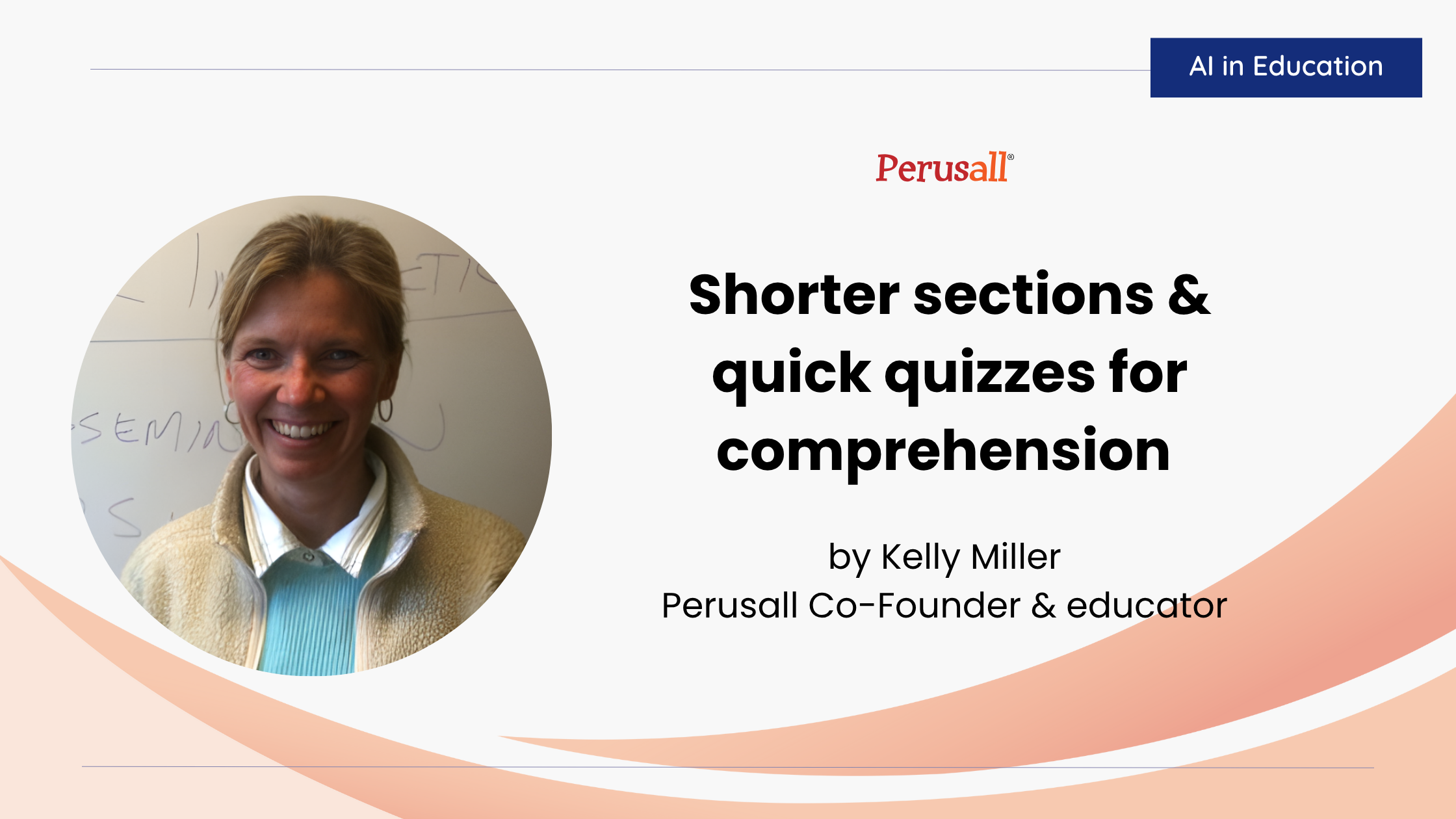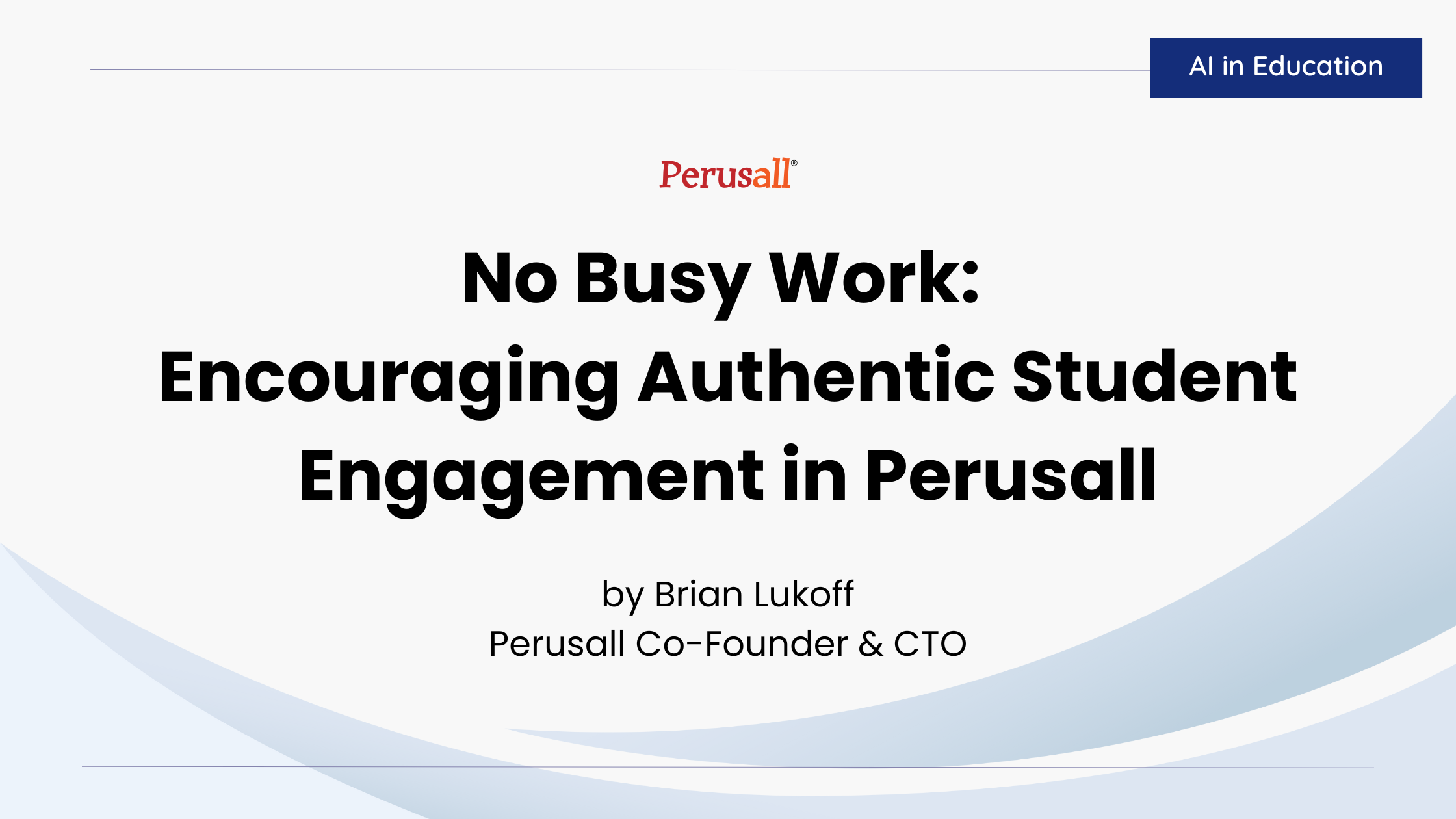Strolling through A Supermarket in California like a flâneur, Allen Ginsberg presents himself as a counterculture shopper in 1950s America. He sees the extraordinary in the new ordinary–garishly lit neon fruit, beaming wives in the avocados, and babies in the tomatoes. With a nod to William Blake wandering the ‘charter’d’ streets of London, Ginsberg wandered in and out of the brilliant stacks of cans–moving against the grain of consumerist culture as he refuses to walk a straight line. The poet is shopping for images as he scans the cans and peruses the produce (what penumbras!). He doesn’t push a cart, and he doesn’t go through the checkout line. Ginsberg is a grab-and-go shopper.

If shopping with Ginsberg is like coloring outside the lines, annotating his poem with Perusall is like reading beside the lines. ‘A Supermarket in California’ was one of the first poems I assigned for digital annotation. This e-learning tool allows individual students to highlight and comment on portions of a literary text, ranging from a single word or phrase to a sentence or cluster of sentences. (Persuall also works for images.) I give my students considerable freedom in doing their digital annotations. I tell them I’m not looking for anything momentous–just 5 specific things they notice in the poem and why they drew attention. I don’t require students to distribute their annotations across the entire text. I’m not grading their reading comprehension, either. So, I always override the software’s automatic scoring, my own refusal to walk the line in my teaching. I just want to know something about how my students are reading some of the poems I assign, and to give them their own digital space to interact with one another’s annotations.
Hear what other educators think about Perusall at a Perusall Social, an online event where you get to ask current users questions and experience the student side of Perusall. Register today!

When students use Perusall, they comment on what they highlight–seeing the text on the left and their annotations on the right. Students can also hover over highlights to see how other readers annotated that portion of the text (see pink highlight below). I sometimes join these digital conversations to share a reference, ask a question, or prompt further comments. My students use their Perusall annotations to:
- Comment on a range of textual elements, from individual words and images to sentences and form;
- Build larger interpretations by connecting a particular textual element to their sense of the whole;
- Connect the text to other texts we’ve read and to our class discussions;
- Connect the text to cultural contexts, including some we did not cover in class;
- Agree or disagree with peer interpretations;
- Locate parts of the text that confused them;
- Ask each other questions;
- Validate one another as readers (especially if they reveal something personal, or are not experienced in reading poems).
Students do their Perusall annotations individually, outside of class. Some highlight 5 things in a single session. Others do the assignment across several logins, contributing to multiple conversations about common highlights. They sometimes do more than the required number of annotations, knowing that there is no extra credit for this sustained engagement.

My students are kinfolk to Ginsberg’s alternative shopper, moving through and across the straight lines of text. As Ginsberg reaches back to generative poets he has read (Federico García Lorca, Walt Whitman, William Blake), my students reach across to literature they have read and to one another. ‘An annotation is part of a story,’ Amanda Golden writes in her recent study of midcentury poets’ annotations of modernist literature. My students’ Perusall annotations tell a story about their own adventures in close reading, and they contribute to a larger story about forming reading communities through digital platforms. In this sense, Perusall assignments blur a key distinction that Golden points out in midcentury print culture, one in which ‘annotations necessarily differ from one’s thoughts while reading.’ When my students do these assignments, I don’t know if the annotations capture their initial thoughts as they read, their perspective after finishing their initial reading, or retrospective insights. My sense is that the composite of annotations is a mixture of all three.
Many of my students tell me this was their favorite assignment. When I debuted my Perusall pedagogy during remote pandemic teaching, a student wrote on the course evaluations that they enjoyed the sense of not reading alone. And this is another reason that ‘A Supermarket in California’ tells us as much about Perusall as the digital annotations tell us about the poem.
The annotations you see above come from my remotely taught undergraduate course on the American 1950s. One extended conversation generated from the culminating phrase in Ginsberg’s third-to-last stanza about leaving the supermarket and walking the solitary streets with his surrogate father, Walt Whitman: we’ll both be lonely (pink highlight). A student’s annotation begins: ‘In a poem that speaks often of being solitary, this line invokes a strange sense of togetherness.’ If there’s a more apt distillation of the poem’s affect that also captures the strange togetherness of remote teaching and learning, I haven’t found it. ‘By idolizing Whitman,’ another student wrote, ‘Ginsberg is able to find a compatriot against the heteronormative system.’ Another annotation points out that because of their sexuality, Ginsberg and his alternative family of gay writers are lonely ‘even when they walk past houses full of stereotypical ’50s nuclear families’ because ‘they are not allowed to love who they want.’ Here the interface of Ginsberg’s supermarket and Gen Z’s digital annotations links the McCarthyite 1950s to our current moment, one in which LGBTQ Americans once again face surveillance.
In his poem’s culmination, Ginsberg hails Whitman as lonely old courage-teacher. Perusall’s window into my students’ reading–and their reading communities–gives me courage in my classrooms and in these times. When we are lonely in going outside the lines, we are lonely together. –MB
The author, Marsha Bryant, grew up in Memphis and studied at the Universities of Tennessee and Illinois. At the University of Florida, where she is Professor of English & Distinguished Teaching Scholar, Bryant specializes in modernist studies, poetry, visual culture, women’s writing, and pedagogy.
Sources:
1950s Grocery Store: – https://clickamericana.com/topics/culture-and-lifestyle/scenes-from-grocery-stores-supermarkets-of-yesteryear
Amanda Golden, Annotating Modernism: Marginalia and Pedagogy from Virginia Woolf to the Confessional Poets (Routledge, 2020)
Student Annotations reproduced by permission
This post originally appeared on Marsha Bryant's Blog.


.png)






